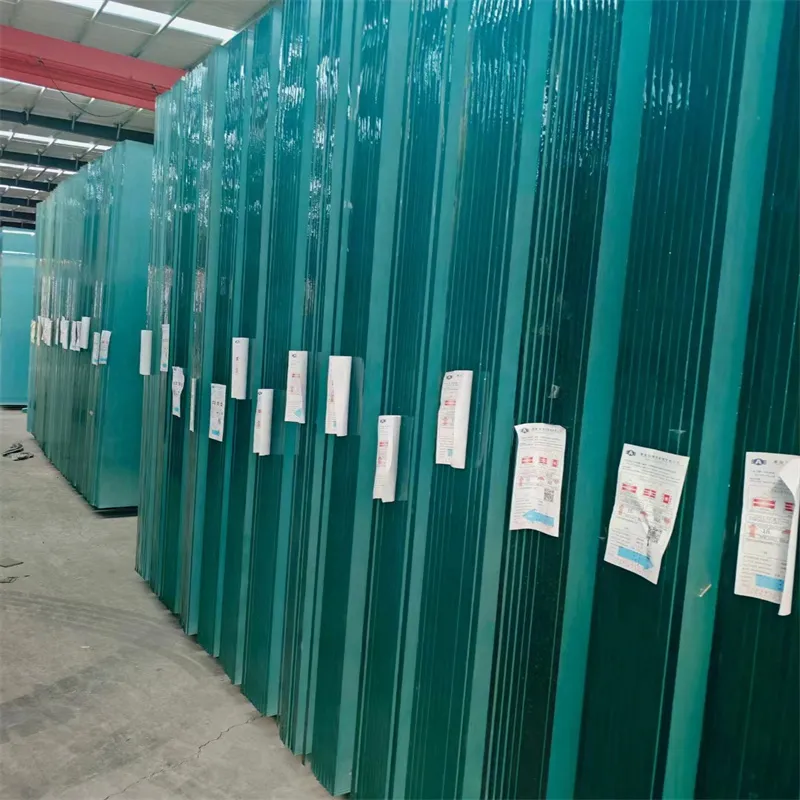Dec . 01, 2024 14:32 Back to list
Understanding the Expense Involved in Laminated Glass Products and Their Benefits
The Cost of Laminated Glass Factors, Benefits, and Applications
Laminated glass, a type of safety glass, is composed of two or more layers of glass held together by an interlayer, typically made of polyvinyl butyral (PVB) or ethylene-vinyl acetate (EVA). It is popular in both commercial and residential applications due to its durability, safety features, and aesthetic appeal. However, one of the primary considerations when selecting laminated glass is its cost, which can vary significantly based on a range of factors. This article explores the costs associated with laminated glass, the factors that influence pricing, and its numerous applications and benefits.
Understanding the Cost of Laminated Glass
The cost of laminated glass can range anywhere from $25 to $100 per square foot, depending on various aspects such as thickness, size, the type of glass used, and additional features like tinted or energy-efficient coatings. Generally, the thicker and more specialized the glass, the higher the cost. For instance, laminated glass used in high-security settings or buildings often necessitates additional layers or special treatments, which can significantly increase the price.
Factors Influencing Cost
1. Thickness of Glass Laminated glass comes in various thicknesses, generally ranging from 3/16 inches to 1 inch or more. Thicker glass offers greater security and insulation but is also more expensive. A standard laminated glass option may cost less than an upgrade to a thicker alternative, which is crucial in applications like soundproofing or security.
2. Type of Glass The particular type of glass that is laminated also impacts the cost. Options include tempered glass, which is treated to be stronger and more resilient to thermal stress, and low-iron glass, which offers clearer transparency. Each type has its unique advantages and price points.
3. Size and Customization Standard sizes of laminated glass may be more affordable, whereas custom sizes and shapes can increase production costs. This customization can include complex designs, which, while enhancing aesthetic appeal, also contribute to higher prices.
4. Interlayer Materials The choice of interlayer material also plays a critical role in cost. PVB interlayers are most commonly used and tend to be more economical, while specialty interlayers, such as those with enhanced acoustic or UV-blocking properties, can lead to higher price tags.
what is the cost of laminated glass

5. Installation Costs The complexity of installation can add to the overall cost. Laminated glass typically requires professional installation, and if the installation location has challenging access or specific structural requirements, labor costs can escalate.
6. Location Geographic location can also influence pricing. Regions with higher demand for laminated glass or strict building codes may see increased costs due to competition or the necessity for specialized labor.
Benefits of Laminated Glass
Despite the higher initial cost compared to regular glass, laminated glass presents numerous benefits that can make it a worthwhile investment. One of the most significant advantages is its safety feature; in the event of breakage, the glass fragments adhere to the interlayer rather than shattering, reducing the risk of injury. This makes it especially valuable in environments prone to accidents or where security is a priority.
Additionally, laminated glass provides excellent sound insulation, making it an attractive choice for buildings located near busy streets or industries. It also offers UV protection, blocking a significant percentage of harmful rays, which can help to preserve the integrity of furnishings and artworks inside by reducing fading.
Aesthetically, laminated glass can be visually appealing and offers a sleek, modern look that enhances the overall design of a structure. It can also be manufactured with colored or frosted interlayers, providing designers with broad creative options.
Conclusion
The cost of laminated glass is influenced by multiple factors, including thickness, type, size, customization, and installation complexity. While it tends to be more expensive than standard glass, the safety features, sound insulation, UV protection, and aesthetic advantages make it a valuable choice for both residential and commercial applications. As consumers become more aware of the benefits of laminated glass, they may find that the initial investment pays off in terms of safety, comfort, and long-term durability. Understanding these factors can help customers make informed decisions when considering laminated glass for their next project.
-
Safety and Style with Premium Laminated Glass Solutions
NewsJun.24,2025
-
Reinvents Security with Premium Wired Glass
NewsJun.24,2025
-
Premium Float Glass Line for Modern Architecture
NewsJun.24,2025
-
Low Emissivity Glass for Energy-Efficient Architecture
NewsJun.24,2025
-
High-Performance Insulated Glass Solutions for Modern Architecture
NewsJun.24,2025
-
Elevates Interior Style with Premium Silver Mirror
NewsJun.24,2025
Related PRODUCTS














